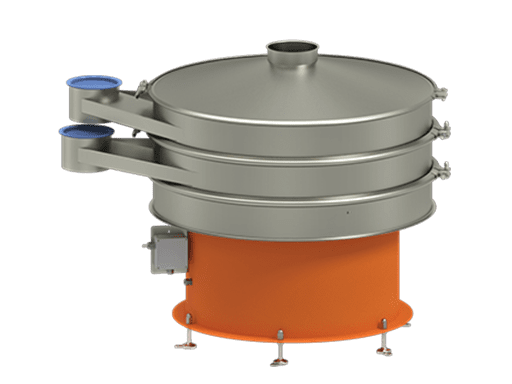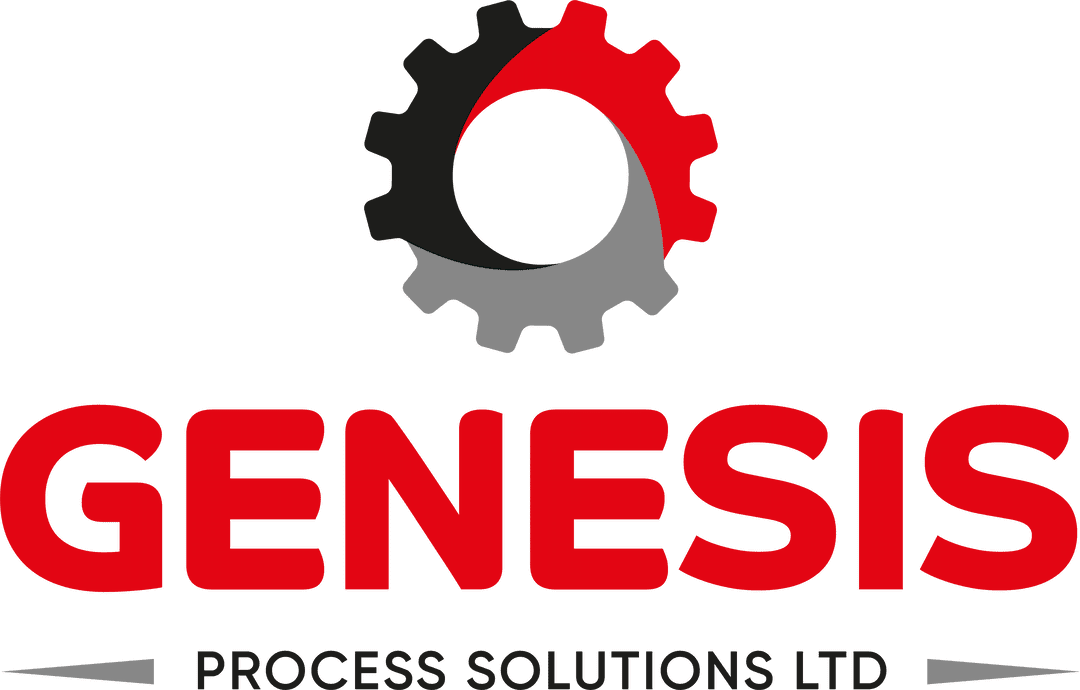A Guide to Sieving Machinery


Genesis Process Solutions offer a range of Farleygreene industrial sieving technology for many different applications. This overview will provide you with an explanation of the different types of vibratory and non-vibratory sieves we have available and if you have a any questions or need any assistance please feel free to contact one of our sieving experts.
There are many different phrases used to describe sieving machinery, including:
- screening machines
- circular screeners
- vibratory screeners
- sifters
Generally each of the Farleygreene machines can be referred to as a ‘sieve’. Many industrial customers use these sieves for a variety of different applications, not simply for screening and separating.
Main Types of Industrial Sieve
Check Sieves
By far the most common type of sieve, this type of sieve is often selected for applications such as:
- to remove lumps from the product
- to remove bits of packaging and other contaminants
- to make sure no insect eggs get into the final product
Overall, this type of sieving is used to ensure a higher quality of final product.
Check sieves are usually a single screen and typically the fine product that passes through the mesh is kept as good product. Check sieves can also be used to remove broken or undersized product as well.
Although check sieves can be placed anywhere in the process line, in most production environments a check sieve is either the first machine in a process, preventing contaminants, or the last machine before the packaging machines, for a final quality check. However,
You can see further details of the Farleygreene range by following this link - Check Sieves
Grading Sieves
A grading sieve is similar to a check sieve but offers more precise "cuts" of the product being sieved. The aim of a grading sieve is to take exact cuts of different particle sizes from the product so that the end material is graded into different sizes. This is usually achieved by passing the product through up to four meshes with decreasing aperture sizes.
The two functions of Check Sieving and Grading are often combined with the first mesh having a large aperture size that performs a check sieving operation before the true grading operations take place. This requirement is dependent on the product being sieved and isn’t always necessary.
Because the particle sizes are very close to the aperture sizes, the throughput of grading sieves is typically a lot slower than that of check sieves. However, this can be compensated for by having larger mesh areas or finely tuning the motor weight set-up.
Follow this link to view the Farleygreene Grading Sieve Range and if you need any assistance please give our team a call.
Linear Sieves
Whilst circular screens are more common, with the product moving across the mesh in a rough spiral, linear vibrating sieves operate on a different principle.
As the name suggests, they move the product in a linear direction, therefore a rectangular screen is used to give the product more time to pass through the mesh. Linear sieves can also efficiently transport a product and can sometimes be used to replace a conventional product conveyor as the vibration of the linear sieve gently bounces the product forward. A sieve can also be inclined to lift the product up to the next stage in the process if required.
Linear vibrating sieves are especially useful for delicate or friable products and for products that have a high percentage of oversized particles, as the length allows the fine product the chance to separate from larger particles and fall through the mesh. This makes linear sieves especially useful for de-dusting or de-watering operations e.g. removing small loose crumbs and flour from finished biscuits.
Farleygreene linear sieves can be designed with rows of parallel bars instead of mesh, for processing pills and capsules for the pharmaceutical and nutraceutical industries. They can also be configured to have multiple meshes for grading operations.
For more details of a linear sieve take a look at the Farleygreene Sievmaster Segregator
Rotary or Centrifugal Sieves
The majority of the Farlegreene sieving range are vibratory sieves. They move the mesh to induce movement in the product allowing it to fall through the mesh. However, another popular method of sieving is with a rotary or centrifugal sieve.
These sieves use a set of paddles to push the product out through a cylinder of mesh, rotating them at a high speed and applying a centrifugal force to the product. The cylinder is mounted horizontally, so a slight twist is applied to the paddles to move the product down the length of the cylinder, and an auger is used to feed the paddles at a steady rate.
These paddles force product through the mesh giving them much higher throughputs when compared to vibratory sieves. The motion of the rotating auger and paddle assembly has the added benefit of breaking down lumps or separating compacted product.
Rotary sieves can only be fitted with a single mesh, so are well suited for check sieving operations.
Follow this link to view further product information on the Farleygreene Centrifugal Sieving range.
Vacuum and Pressure Sieves
Vacuum and pressure conveyors are a commonly used system for transporting raw materials around a factory or process line.
Farleygreene's Slimline pneumatic sieving range is suitable for installation directly into the conveying system, ensuring it remains sealed and preventing the need for additional conveyance systems post-sieve. The flow of the conveying air helps to draw the product through the screen and pass it on to the next process.
Due to the complexities of airflow, these sieves are almost exclusively single screen check sieves rather than being used for grading operations.
Product details and data sheets can be viewed by following this link: Vacuum and Pressure Sieves
Batch Sieves
Batch sieves are suitable for smaller processes, batch production or short production runs. Where throughput rate is not a significant factor in your production process, a small sieve may be all that is required to process a set volume of material.
This type of sieving is still considered a check sieving or grading operation but is not part of a continuous process line.
The Farleygreene Artisan range of sieves, such as the Sievmaster 200-S, is ideal for such batch sieving applications.
As with other processes in a production line, sieving presents a range of challenges that vary with the materials being processed, the throughput of the line, the environmental variations and the standard and finish of the equipment. We have outlined the major elements of the sieving equipment we can offer but there are many other options and specials that have been developed by Farleygreene. We would be more than happy to discuss these with you and to assist in your process design and equipment selection.
Please use the details on our contact page to get in touch.
